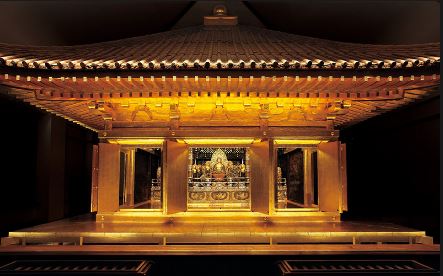-
- USA/Canada 1-800-285-2726
- Australia (02) 8006 4411
Kinpaku is the Japanese word for gold leaf, which is a handicraft material used to decorate traditional Japanese art forms. The term translates literally to "gold leaf" in English. Gold leaf is made by beating gold into extremely thin sheets, which can then be applied to objects or artworks to add a shimmering, luxurious finish. The technique of applying gold leaf is meticulous and requires skilled craftsmanship. The thinness of the leaf allows it to conform to the intricacies of the underlying material, creating stunning and intricate designs. Despite its delicate nature, gold leaf is highly durable under various environmental conditions, which is why it is so popular in both indoor and outdoor applications.

Kinpaku has been a significant component in Japanese art and decoration for centuries, embodying both the aesthetic ideals of luxury and the deeper cultural values of purity and transcendence. Its application spans across a variety of traditional Japanese arts, each showcasing the versatility and beauty of gold leaf in unique ways. Gold leaf is used extensively in traditional Japanese screen painting and lacquerware. It is often used to embellish temples, shrines, and statues, particularly in areas that are intended to represent purity and divinity.

The use of gold in Japanese cuisine is deeply rooted in the country's history of craftsmanship and artistry, where gold has been used for centuries not only in culinary applications but also in art and architecture. The integration of kinpaku in food is seen as an extension of this tradition, embodying beauty and refinement.
Kinpaku is also famously used in Japanese cuisine. It is sometimes sprinkled on dishes and sweets, such as wagashi (traditional Japanese confections) or even on luxury versions of sushi, as a symbol of luxury and celebration. It is made from pure gold, usually 22 to 24 karats, which ensures that it is free from any impurities that could be harmful if ingested.

Japanese kinpaku plays a significant and visually striking role in traditional Japanese architecture, particularly in religious and cultural landmarks. The use of gold leaf in architecture not only enhances the aesthetic appeal of these structures but also holds deep symbolic significance, often representing purity, longevity, and sacredness. Historic and religious sites in Japan often feature gold leaf in their architecture. One of the most famous examples is the Kinkaku-ji (Golden Pavilion) in Kyoto, which is covered in gold leaf and reflects beautifully in the pond surrounding it.
Iconic temple covered in pure gold leaf
The first and sole quilt museum established by Mutsuko Yawatagaki
Museum dedicated to preserving Kyoto's traditional and cultural works of art